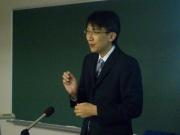Research Experience
-
2017.04-Now
Waseda University Faculty of Human Sciences Professor
-
2007.04-2017.03
Waseda University Faculty of Human Sciences Associate Professor
-
1999.04-2007.03
Fukui University Faculty of Education and Regional Studies Associate Professor
-
1998.04-1999.03
Fukui University Faculty of Education Associate Professor
-
1996.04-1998.03
Waseda University School of Human Sciences Research Associate
-
1994.04-1996.03
JSPS Research Fellow


Click to view the Scopus page. The data was downloaded from Scopus API in December 18, 2025, via http://api.elsevier.com and http://www.scopus.com .